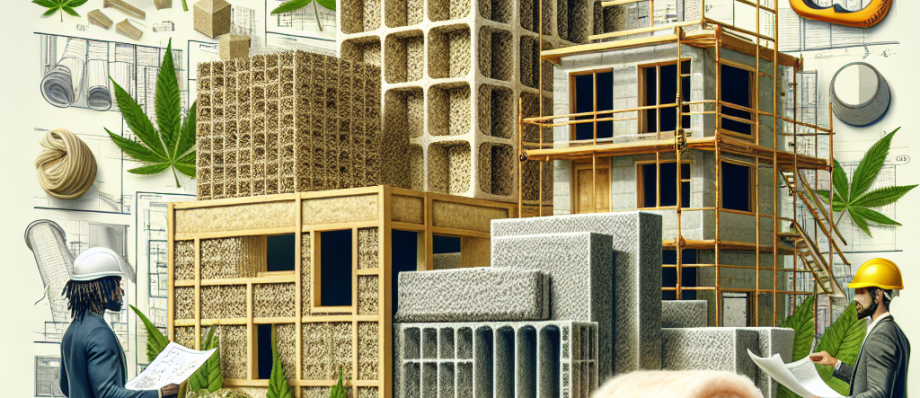Hemp Building Materials
The Benefits of Using Hemp Building Materials in Construction
Hemp building materials have gained significant attention in the construction industry in recent years. This versatile and sustainable material offers numerous benefits that make it an attractive choice for builders and developers. From its eco-friendly properties to its durability and versatility, Hemp building materials are revolutionizing the way we construct buildings.
One of the most significant benefits of using Hemp building materials is their eco-friendliness. Hemp is a fast-growing plant that requires minimal water and no pesticides to thrive. It also absorbs large amounts of carbon dioxide from the atmosphere, making it an excellent choice for reducing greenhouse gas emissions. By using Hemp in construction, builders can contribute to a more sustainable and environmentally friendly future.
In addition to its eco-friendly properties, Hemp building materials are also incredibly durable. Hempcrete, a mixture of Hemp hurds, lime, and water, is a popular choice for insulation and wall construction. This material is not only fire-resistant but also has excellent thermal and acoustic properties. It provides superior insulation, keeping buildings cool in the summer and warm in the winter. Hempcrete is also resistant to mold, pests, and rot, ensuring the longevity of the building.
Furthermore, Hemp building materials offer great versatility. Hemp can be used in various forms, including fiberboard, insulation, and concrete. Hemp fiberboard is an excellent alternative to traditional wood-based products, as it is lightweight, strong, and resistant to moisture. It can be used for flooring, roofing, and wall panels, providing a sustainable and durable solution.
Hemp insulation is another versatile option that offers numerous benefits. It is breathable, allowing moisture to escape and preventing the buildup of mold and mildew. Hemp insulation also has excellent soundproofing properties, making it ideal for reducing noise pollution in buildings. Additionally, it is a natural and non-toxic material, making it safe for both the environment and the occupants of the building.
Hempcrete, as mentioned earlier, is a game-changer in the construction industry. It is a lightweight and breathable material that offers excellent thermal insulation. It is also highly fire-resistant, making it a safer choice for buildings. Hempcrete is easy to work with and can be used for various applications, including walls, floors, and roofs. Its versatility and durability make it an attractive option for builders and architects.
Apart from its environmental and practical benefits, using Hemp building materials can also have financial advantages. Hemp is a cost-effective material, as it requires minimal maintenance and has a long lifespan. Additionally, hempcrete has excellent energy-saving properties, reducing heating and cooling costs in buildings. By using Hemp building materials, builders can save money in the long run while contributing to a more sustainable future.
In conclusion, Hemp building materials offer numerous benefits that make them an excellent choice for construction projects. Their eco-friendly properties, durability, versatility, and cost-effectiveness make them a sustainable and practical alternative to traditional building materials. As the construction industry continues to prioritize sustainability, Hemp building materials are likely to become even more popular in the years to come. By embracing Hemp, builders and developers can create greener, more durable, and more efficient buildings.
Exploring the Sustainable and Eco-Friendly Nature of Hemp Building Materials
Hemp Building Materials: Exploring the Sustainable and Eco-Friendly Nature of Hemp Building Materials
In recent years, there has been a growing interest in sustainable and eco-friendly building materials. As the world becomes more conscious of the environmental impact of traditional construction methods, alternative options are being sought out. One such option that has gained significant attention is Hemp building materials.
Hemp, a variety of the Cannabis sativa plant, has been used for centuries for various purposes. However, it is only in recent years that its potential as a building material has been recognized. Hemp building materials are derived from the fibrous stalks of the Hemp plant, which are processed to create a range of products, including hempcrete, Hemp insulation, and Hemp fiberboard.
One of the key advantages of Hemp building materials is their sustainability. Hemp is a fast-growing plant that requires minimal water and no pesticides or herbicides to thrive. It can be cultivated in a relatively short period, making it a highly renewable resource. Additionally, Hemp plants absorb large amounts of carbon dioxide during their growth, helping to reduce greenhouse gas emissions.
Hempcrete, one of the most popular Hemp building materials, is a mixture of Hemp hurds (the woody core of the Hemp plant) and a lime-based binder. This combination creates a lightweight, insulating material that is both breathable and durable. Hempcrete has excellent thermal properties, providing insulation in both hot and cold climates. It also has the ability to regulate humidity, creating a comfortable living environment.
Another Hemp building material gaining popularity is Hemp insulation. Made from the long fibers of the Hemp plant, Hemp insulation offers excellent thermal and acoustic properties. It is a natural alternative to traditional insulation materials, such as fiberglass, which can release harmful particles into the air. Hemp insulation is also resistant to mold, pests, and fire, making it a safe and healthy choice for buildings.
Hemp fiberboard is another versatile Hemp building material. It is made from the Hemp plant’s fibers, which are compressed and bonded together to create a strong and durable board. Hemp fiberboard can be used for a variety of applications, including flooring, wall panels, and furniture. It is a sustainable alternative to traditional fiberboard, which is often made from virgin wood fibers.
The use of Hemp building materials not only benefits the environment but also offers economic advantages. Hemp cultivation requires less land and water compared to other crops, making it a cost-effective option for farmers. Additionally, the demand for Hemp building materials is growing, creating new opportunities for businesses in the construction industry. As more people become aware of the benefits of Hemp, the market for Hemp building materials is expected to expand further.
In conclusion, Hemp building materials offer a sustainable and eco-friendly alternative to traditional construction materials. With their renewable nature, excellent thermal properties, and resistance to pests and fire, Hemp building materials are becoming increasingly popular in the construction industry. As the world continues to prioritize sustainability, Hemp is poised to play a significant role in shaping the future of building materials.
Q&A
1. What are Hemp building materials?
Hemp building materials are construction materials made from the fibers of the Hemp plant, such as hempcrete, Hemp insulation, and Hemp fiberboard.
2. What are the advantages of using Hemp building materials?
Advantages of using Hemp building materials include their sustainability, as Hemp is a fast-growing renewable resource, their high thermal insulation properties, their ability to regulate humidity, and their durability and resistance to pests and fire.
Conclusion
In conclusion, Hemp building materials offer numerous benefits such as sustainability, durability, and versatility. They have the potential to revolutionize the construction industry by providing a renewable and eco-friendly alternative to traditional building materials. With ongoing research and development, Hemp building materials are likely to become more widely adopted in the future, contributing to a more sustainable and environmentally conscious approach to construction.
![]()



